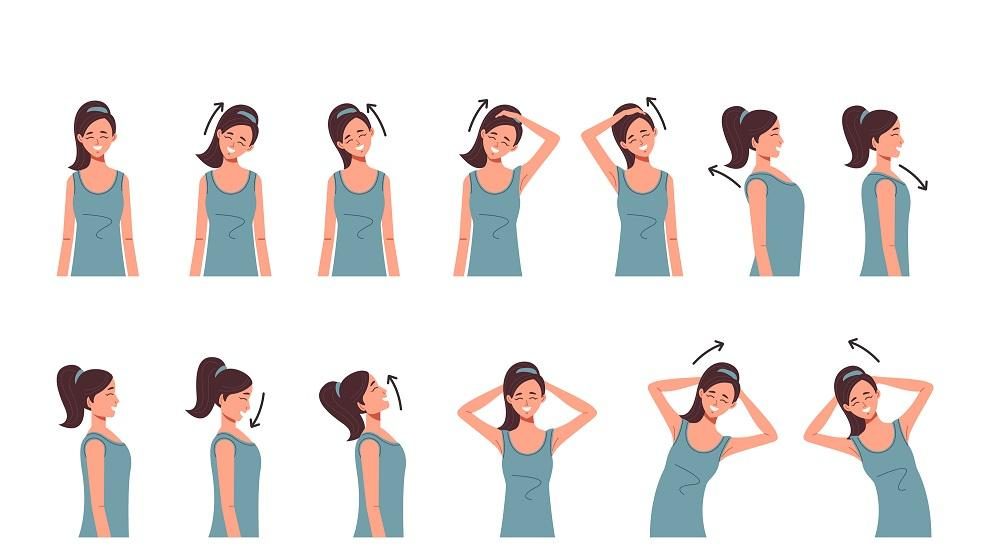 When you think of posture, you likely picture your spine- how straight it is, if your shoulders are upright, or if you are hunched over. But the neck can have a separate posture of its own, and when it is poor, it is often called forward head posture. Bad neck posture is extremely common now as a result of how often we use mobile devices and is a common reason that people seek neck injury treatment from a chiropractor. The best thing you can do is to prevent yourself from developing forward head posture at all, but if you do have this issue, there are steps you can take to help.
When you think of posture, you likely picture your spine- how straight it is, if your shoulders are upright, or if you are hunched over. But the neck can have a separate posture of its own, and when it is poor, it is often called forward head posture. Bad neck posture is extremely common now as a result of how often we use mobile devices and is a common reason that people seek neck injury treatment from a chiropractor. The best thing you can do is to prevent yourself from developing forward head posture at all, but if you do have this issue, there are steps you can take to help.
Signs of Bad Neck Posture
While your neck’s posture can be impacted by a variety of factors, the most common reason for this issue is the devices we use each day. Whether it is a laptop or a mobile phone, we tend to look down at these devices, holding our heads forward and placing pressure on the cervical spine. This position is so closely associated with neck posture that it has been given nicknames like “nerd neck” and “tech neck” by many chiropractors. A similar effect can occur when you spend too much time driving, carry a heavy backpack, or sleep with your head too elevated.
People who spend a lot of time looking down and performing repetitive movements like a programmer, massage therapist, hair stylist, or writer may be more likely to have forward head posture. Past neck injuries or weakened neck muscles are also a risk factor.
A good way to tell if you have forward head posture is to perform a simple test at home. Stand with your back to a wall, making sure your shoulder blades and heels touch the wall and your feet are shoulder-width apart. Do your best to achieve a neutral back position- it can be helpful to squeeze your shoulder blades together and release them a few times. If the back of your skull is touching the wall, you likely have some forward head posture.
This condition results in tight upper back muscles and weakened muscles in the front of the neck. This imbalance causes unpleasant neural, musculoskeletal, and cardiovascular side effects. Under this pressure, you may feel upper back pain, shoulder pain, and neck pain. There is also an increased risk of herniated discs, muscle spasms, fatigue, restricted breathing, TMJ pain, insomnia, and sleep apnea.
Adjustments for Forward Neck Posture
 Whether you are trying to prevent yourself from developing poor posture in the cervical spine or reverse some bad habits,
Whether you are trying to prevent yourself from developing poor posture in the cervical spine or reverse some bad habits,
there are lifestyle and environmental changes you can make to accommodate.
Set Up an Ergonomic Workplace
It is not an option for most of us to simply stop using computers and devices throughout the day. What you can do is set up a desk in the most ergonomic way possible to encourage better posture and habits.
A good rule of thumb is that what you are looking at, like a computer monitor, should be at eye level. When you look straight ahead, you should be at eye level with the top third of your screen. If you are using something handheld like a phone, try holding it up instead of looking down. You should place your mouse and keyboard in a place where your forearms are parallel to the floor during use. Your elbows should also be bent at an approximately 90-degree angle.
Your office chair can also make a big difference in these setups. A chair with a headrest can allow you to keep your head flush during work and serve as a reminder to correct your posture.
Use a Cervical Pillow
Also called an orthopedic pillow, a cervical pillow is a distinctively shaped pillow with the center curved inward to promote a natural curve of the head and spine. The design is intended to keep your neck neutral rather than flexed forward. You can achieve something similar by sleeping on your back and using a rolled towel under your head instead of a pillow.
If you use a regular pillow, be sure that it is firm and does not elevate your head above what is natural. You should also avoid sleeping on your stomach if possible, as it is impossible for your spine to remain neutral when lying this way.
Adjust Your Backpack
Extra weight on your upper back can cause pain and neck issues like poor posture. If you need to wear a backpack, be sure it is proportional to your body. Remove any unneeded items and be sure it is not so heavy it is painful. If you do need to carry any heavy items, place them near the center of your back. You should also be sure to use both straps to avoid excessive stress on one side of your body.
Exercises for Neck Posture
Certain exercises can be very effective at addressing forward head posture.
Chin Tuck Exercises
To activate and strengthen the muscles in the front of your neck, you can perform simple chin tucks.
- Place 2 fingers at the bottom of your chin.
- Gently tuck your chin in and retract your head backward. Use your fingers to keep your chin tucked the whole time.
- Your eyes should be level and you should feel some pulling in the back of your neck.
- Hold for 3 to 5 seconds, then relax for a moment.
- Repeat 10 times.
Neck Flexion
To stretch the back of your neck muscles:
- Tuck your chin in using 2 fingers of one hand.
- Place your other hand on the back of your head, applying a gentle force down as you pull your head toward your chest.
- When you feel stretching in the back of your neck, hold the position for 30 seconds.
- Repeat 3 times.
Doorway Stretch
To open your chest and shoulders and relieve tightness:
- Stand in a doorframe, positioning your elbows and hands on the frame.
- Step through the door slowly until you feel a stretch. Do not arch your back.
- Hold for 30 seconds, then return to starting position.
Repeat 2 to 3 times.
Shoulder Blade Squeeze
To activate and strengthen low and mid-back muscles:
- Sit in a chair, positioning your feet and knees slightly wider than your hips.
- Maintain a chin tuck and raise your chest up, ensuring your spine is in a neutral position.
- Rest both arms down by your sides.
- Bring your arms back, externally rotating them so your thumbs are pointing backward.
- Hold for 5-10 seconds, then release. Breathe normally.
- Aim for 3 sets of 10-15 repetitions.
Upper Trapezius Stretch
If your neck and upper back muscles are tight:
- Begin either in a standing or seated position.
- Place one hand on the opposite side of your head.
- Bring your head down to your shoulders, using the hand overhead to press your neck down.
- Hold for 20-30 seconds.
- Repeat 2-3 times.
Treatment Options for Neck Posture
 If you are still struggling with forward head posture after trying these interventions, it is possible there is a more permanent issue, and you will need to seek further treatment.
If you are still struggling with forward head posture after trying these interventions, it is possible there is a more permanent issue, and you will need to seek further treatment.
Chiropractic care can be used to return alignment to the cervical spine when it has been moved out of alignment due to poor posture. Through a series of manual adjustments and therapies, the chiropractor can help the neck re-align and relieve pain and pressure that make it difficult to improve posture on your own.
Physical therapy is also commonly used for the prevention and treatment of tech neck. Physical therapy uses a series of exercises, tools, and adjustments to change habits moving forward. The goal is to strengthen neck muscles and improve flexibility and range of motion so that the neck is better able to support itself moving forward, avoiding injury. Physical therapists can also offer tips on creating a more optimal workspace and avoiding bad habits that may impact your posture.
In some cases, forward neck posture can be caused by injuries or other conditions, rather than lifestyle and environmental factors. These situations may require different or more intensive treatment, including medication for pain management, neck bracing, and other therapies. Rare cases may even require surgery.
Left untreated, forward head posture can lead to not only permanent issues in the neck, but poor shoulder mobility, bulging and herniated discs, shoulder blade pain, osteoporosis, and consistent tension headaches.
At AICA Lithia Springs, our team of multi-disciplinary specialists is ready to help address your posture. Our chiropractors will develop a personalized routine to return you to alignment while working with a physical therapist to create better habits. If you need further care, we also have orthopedists and neurologists on staff who will work with pain management specialists on more severe cases. Contact our office today to be paired with the right providers and begin working towards improved neck posture.
